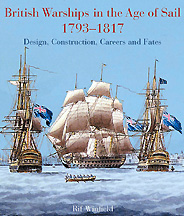
A frigate is a type of warship, having various sizes and roles over the last few centuries.
A ship prefix is a combination of letters, usually abbreviations, used in front of the name of a civilian or naval ship.

The first USS Columbia of the United States Navy was a three-masted, wooden-hulled sailing frigate of the US Navy, rated for 50 guns. She was built at Washington Navy Yard. Her keel was laid in 1825, but as was typical of much Navy construction during this period, she was not launched until much later, on 9 March 1836.

In a navy, a rate, rating or bluejacket is a junior enlisted member of that navy who is not a warrant officer or commissioned officer. Depending on the country and navy that uses it, the exact term and the range of ranks that it refers to may vary.

In the 18th century and most of the 19th, a sloop-of-war in the Royal Navy was a warship with a single gun deck that carried up to eighteen guns. The rating system covered all vessels with 20 guns and above; thus, the term sloop-of-war encompassed all the unrated combat vessels, including the very small gun-brigs and cutters. In technical terms, even the more specialised bomb vessels and fireships were classed as sloops-of-war, and in practice these were employed in the sloop role when not carrying out their specialized functions.

Steam frigates, also known as screw frigates, and the smaller steam corvettes and steam sloops were steam-powered warships. The first such ships were steam-powered versions of the traditional frigates, corvettes, and sloops.

The rating system of the Royal Navy and its predecessors was used by the British Royal Navy between the beginning of the 17th century and the middle of the 19th century to categorise sailing warships, initially classing them according to their assigned complement of men, and later according to the number of their carriage-mounted guns.

The second USS Savannah was a frigate in the United States Navy. She was named after the city of Savannah, Georgia.

The Kingston Royal Naval Dockyard was a Royal Navy Dockyard from 1788 to 1853 in Kingston, Ontario, Canada, at the site of the current Royal Military College of Canada.

HMS Blackwood was the name ship of her class of second-rate anti-submarine frigates built for the Royal Navy in the 1950s.

HMS Pellew (F62) was one of a dozen Blackwood-class frigate of second-rate anti-submarine frigates built for the Royal Navy in the 1950s. She was named for Israel Pellew, who served during the French Revolutionary and Napoleonic Wars. He was brother to Edward Pellew, 1st Viscount Exmouth

The Calypso class comprised two steam corvettes of the Royal Navy. Built for distant cruising in the heyday of the British Empire, they served with the fleet until the early twentieth century, when they became training ships. Remnants of both survive, after a fashion; HMS Calliope in the name of the naval reserve unit the ship once served, and HMS Calypso both in the name of a civilian charity and the more corporeal form of the hull, now awash in a cove off Newfoundland.

British Warships in the Age of Sail is a series of four books by maritime historian Rif Winfield comprising a historical reference work providing details of all recorded ships that served or were intended to serve in the Royal Navy from 1603 to 1863. Similar volumes dealing with other navies during the sailing era have followed from the same publisher.

The History of the United States Navy ratings spans more than 200 years of U.S. history from the United Colonies of the 1775 era to the current age of the 21st century United States Navy. Navy ratings in America were first created in 1775, during the American Revolutionary War, for use by the Continental Navy. After securing independence, the fledgling United States was without an operational Navy for nearly in decade. In 1787, the first three frigates of the United States were formally launched, bringing about new regulations concerning enlisted seaman ratings

HMS Maidstone was a 28-gun Coventry-class sixth-rate frigate of the Royal Navy.

John Lenthall was an important American shipbuilder and naval architect. He was responsible for the construction and repair of United States Navy ships during the American Civil War (1861–1865), as well as in the years immediately before and after it. His career spanned the U.S. Navy's transition from sail to steam propulsion and from wooden ships to ironclads, and in retirement he participated in early planning for an eventual steel navy.
John McFarlane Gray, also known as J. Macfarlane Gray, was a Scottish engineer who invented a portable steam riveting machine and a steam steering mechanism for Isambard Kingdom Brunel's famous SS Great Eastern.
HMS Cleopatra was a Royal Navy Comus-class screw corvette built in 1878.

















